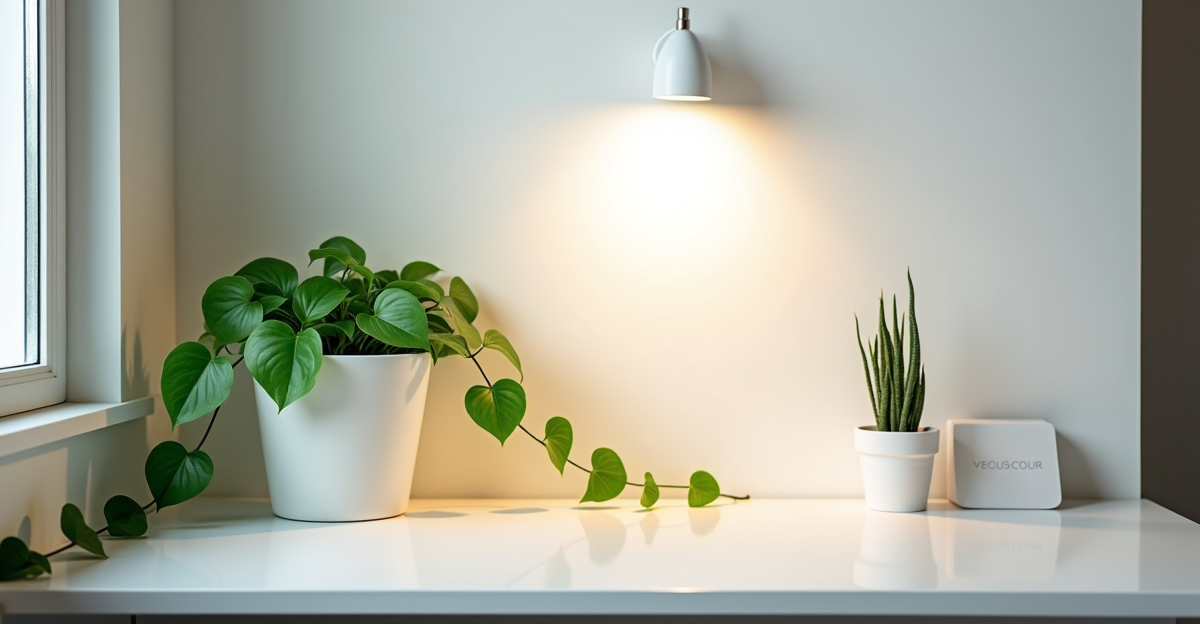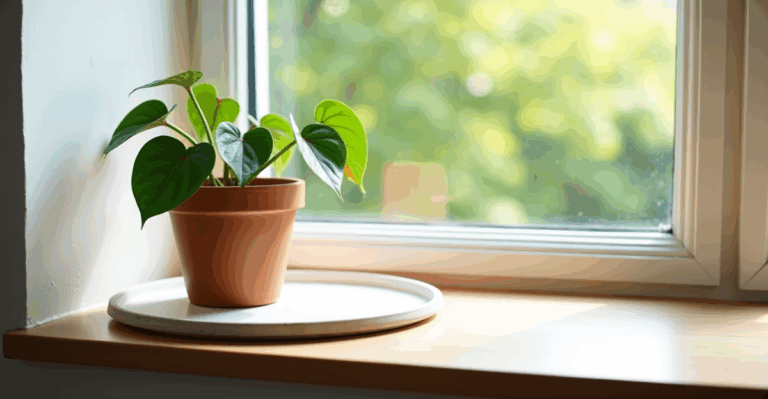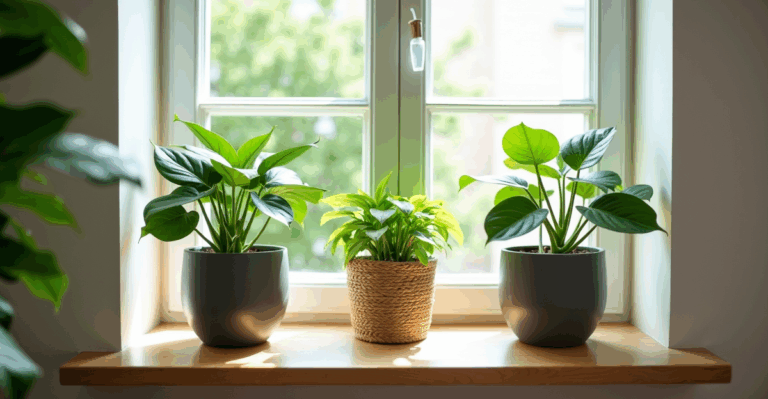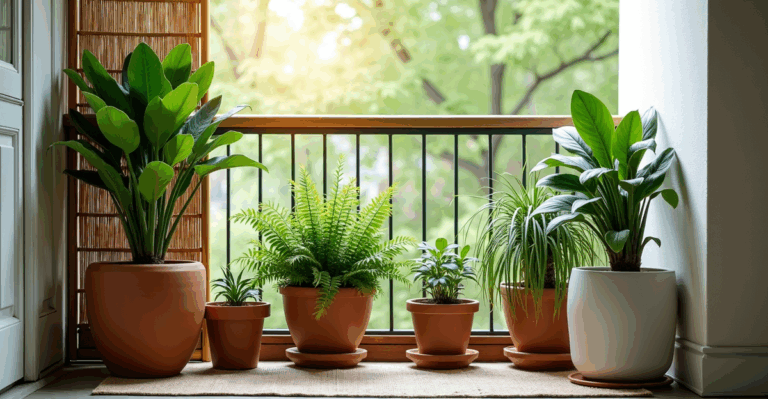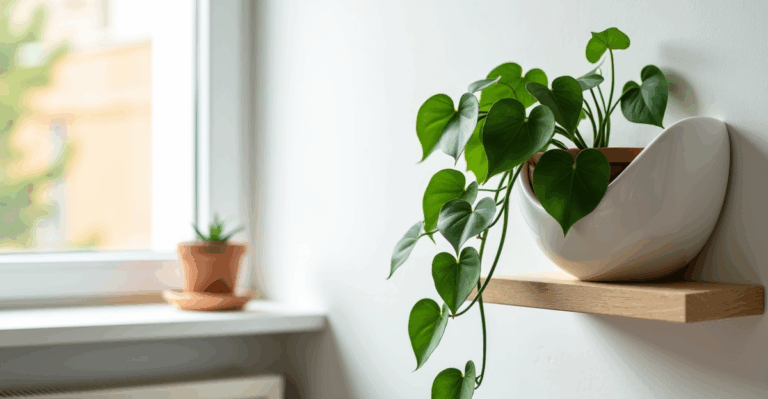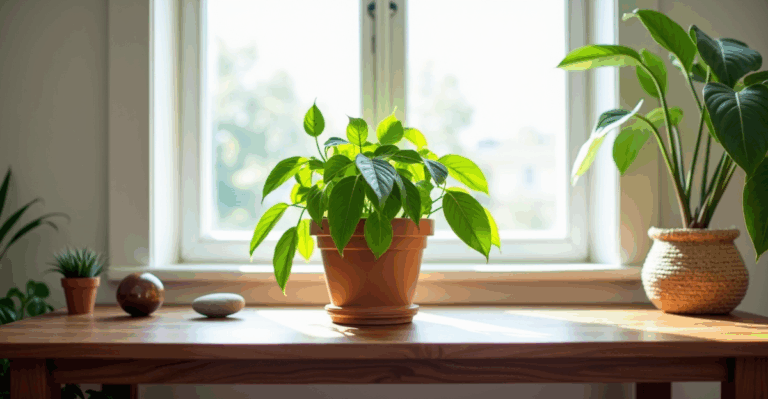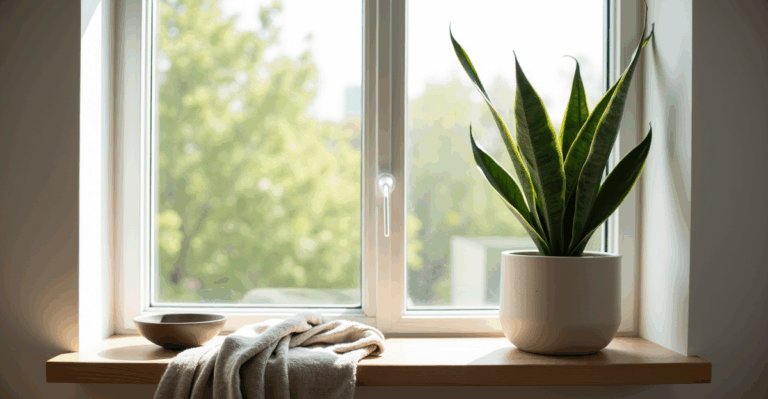How to Style a Studio Corner with Pothos (No Window? We’ve Got You Covered)
Picture this: You’ve just moved into your tiny studio apartment. The only window is a narrow, high-up slit that barely lets in a sliver of pale morning light. You know you want that lush, trailing Pothos to soften the bare corner beside your desk, but you’ve already seen one wilt in the dimness. You’re not alone. So many of us face this: a beautiful plant, a dead space, and zero natural light. It’s frustrating, but it’s also a chance to get creative. Pothos thrives in low light when we give it what it actually needs—not just a window it doesn’t have. Let’s turn that shadowy corner into a living, breathing focal point, no natural light required.
The Myth: Pothos Needs Sun (Spoiler: It Doesn’t)
We’ve all heard the cliché: “Pothos loves bright, indirect light.” True for optimal growth, sure, but it’s wildly adaptable. Pothos (Epipremnum aureum) is a champion of low light. It will grow slowly and stretch out in dimness, but it won’t die. The real problem isn’t the lack of sun—it’s the mismatch between the plant’s needs and our habits. In a dark corner, we often overwater because we think it’s thirsty (it’s not), or we place it where it gets zero light and call it “low light.” Pothos needs at least some consistent light, even if it’s artificial. That’s where grow lights become your secret weapon—not a luxury, but a practical necessity.
How to Make Grow Lights Work (Without the Headache)
Forget bulky, expensive fixtures. We’re talking about simple, smart placement. A single 6500K LED grow light (like a small clamp lamp or a puck light) placed 12–18 inches above your Pothos for 10–12 hours daily is perfect. Why this works: Pothos doesn’t need intense light, just consistent, full-spectrum exposure. Set a timer so you don’t have to remember—consistency is key. Place it above the plant, not beside it, so light falls evenly on the leaves. If your corner is near a wall, angle the light slightly inward to avoid harsh shadows. This isn’t about mimicking the sun; it’s about giving your plant the light it actually uses for photosynthesis. Pro tip: During winter, when indoor light is weakest, extend the hours slightly (12–14 hours) to compensate for shorter days.
Styling the Corner: Where Form Meets Function
Your corner isn’t just a place to hold a plant—it’s a story. Start with a planter that works with the light, not against it. A heavy ceramic pot will sink your light source or create a bulky silhouette. Instead, choose something lightweight, modern, and functional—like a 3D-printed planter. These are perfect: they’re designed to sit neatly under a grow light without blocking airflow, they have subtle textures that complement minimalist decor, and they’re lightweight enough to move easily for cleaning or adjusting light height. Place the planter on a small riser (like a wooden block or a woven tray) to elevate it above the desk surface and create visual depth. Add a second, smaller trailing plant (like a String of Hearts) in a clear, geometric pot beside it for layered texture. Avoid dark, opaque planters—they absorb light and make the space feel closed-in. Instead, opt for a matte white, soft grey, or textured concrete finish. This keeps the focus on the plant, not the pot.
Avoiding the Overwatering Trap (It’s Not What You Think)
In low-light conditions, Pothos grows slowly, so it uses water much slower. The biggest mistake? Watering on a schedule (like every 7 days) without checking the soil. Here’s the real rule: Always check the top 2–3 inches of soil with your finger. If it feels dry there, water thoroughly until it drains out the bottom. If it’s still damp, wait. Overwatering in low light is the #1 killer—roots rot in cool, dark, wet soil. Why it happens: We assume a plant in a dark corner needs more water because it’s “not growing fast.” But it’s the opposite. Also, if you’re using LECA (clay pebbles) or semi-hydro, remember: these systems hold less water than soil. Water less often than you’d expect—maybe every 10–14 days. And always flush the pot with plain water once a month to prevent mineral buildup from tap water (common in low-light, low-watering scenarios).
Edge Cases & Honest Trade-Offs
Let’s be real: grow lights cost electricity (a few cents a day), and you’ll need to adjust the light height as your Pothos grows taller. If your Pothos gets leggy (long, bare stems), it’s a sign it’s reaching for light. Prune it back to the node, and it will branch out. Don’t try to move the plant to a brighter spot—this causes shock. Instead, gently reposition the light. Also, be aware: Pothos in low light can attract more fungus gnats if overwatered (they love damp soil). To prevent this, let the top inch of soil dry between waterings and avoid letting the pot sit in a saucer. If you do get gnats, a quick top-dressing of sand or a sticky trap works better than harsh sprays.
Your Corner, Styled (A Real Studio Example)
Take Maya, who lives in a 300-square-foot studio with no windows. Her corner had a bare desk, a small bookshelf, and a cold, dark corner. She placed a Pothos in a lightweight, 3D-printed grey planter on a small ceramic riser. She clipped a 6500K LED puck light to the bookshelf shelf above it (12 inches away) and set it on a timer for 10 hours nightly. She watered only when the top 2 inches were dry—about every 10 days in winter, less often in summer. The result? A lush, trailing plant that flows over the desk edge, creating a natural screen between her workspace and the living area. The 3D-printed planter’s clean lines didn’t compete with her minimalist decor; it elevated the whole look. The grow light was hidden in the shelf, so it felt intentional, not industrial.
Key Takeaways
– Light is non-negotiable: A simple grow light (6500K, 10–12 hours/day) is far more effective than hoping for natural light.
– Water less, check more: Low light = slow growth = less water. Always check the top 2–3 inches of soil.
– Planters matter: Lightweight, functional pots (like 3D-printed ones) enhance styling and work with grow lights.
You’ve got this. That dark corner isn’t a dead zone—it’s a blank canvas. Pothos will reward your patience and smart setup with quiet, elegant growth. And when you’re ready to grow your setup, explore our 3D-printed planters.

